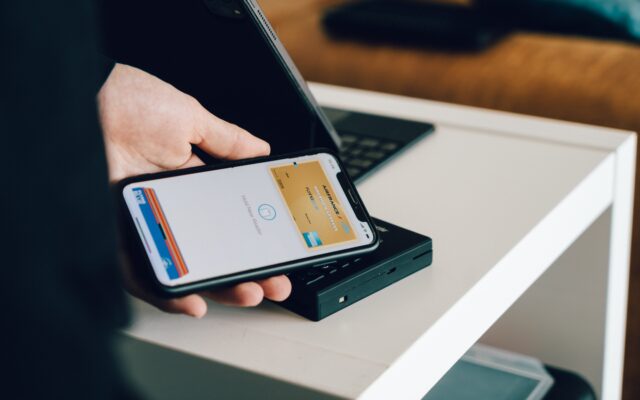The payments landscape is evolving because of fintech advances and the ever-shifting sands of consumer habits. From COVID creating an uptick towards contactless payments by customers, to voice commerce on devices like Alexa — here’s five payment trends to watch.
1. B2C and B2B Payments Powered by the Internet of Things
Paying for goods with a wearable device or a household appliance seemed like sci-fi not so long ago. Now, consumers have come to accept it and even expect it in compatible industries like GPS-mapping and high-tech sportswear. In the home, consumers can order groceries right from their fridge, with connected devices from manufacturers like Samsung.1
Connected devices in business settings can include RFID tags, elevators, printers, thermostats and specialist site vehicles. More B2B-oriented merchants have some road to travel before capturing the opportunities this payment form presents, but there is no reason why the IoT cannot apply to sectors like warehousing, shipping, logistics‚ with suppliers and delivery partners able to approve and accept contactless payments via connected devices. Consulting firm Bain estimated the Internet of Things for B2B could reap more than $300 billion this year.
2. Omnichannel: From Buzzword to Payments Advantage
Omnichannel. The term has become something of a buzzword in recent years, especially if you’re in retail or ecommerce. Put simply, omnichannel means turning up for your customers in the same way and offering a seamless experience no matter where or how they are interacting with your goods, products or services. Think of a pair of shoes that are bought and paid for on a website or app and then collected by a customer in-store. The ability to use two-factor authentication, monitor for suspect transactions, and safeguard payment data across channels will be key to omnichannel success.
3. The Battle for Voice Commerce Dollars
Alexa has become a household name in more ways than one in recent years. OC&C estimates 13% of US and 10% of UK households had a smart speaker in December 2017. An estimated six million homeowners ordered products through these that year.2
The global voice-based smart speaker market will be valued at $30 billion by 2024.3 A recent report by Adobe Digital Insights4 shows:
- 43% of smart speaker owners use them to make shopping lists
- 47% conduct product research on their smart speaker
- 32% use them only for price comparison.
With speakers and devices from the likes of Google, Apple, and Microsoft also vying for supremacy in the voice search and commerce space, the fledgling form of shopping could become one of the biggest consumer payment trends of the years ahead.

Improve Customer Experiences With Digital Payments
Download the Gartner report How to Improve Customer Experiences in Digital Commerce Payments.
4. Crypto Sparks Talks About Digital Currencies
Almost everyone has heard of BitCoin or Ethereum by now.
Since it first emerged, ‘crypto’ has proliferated, with investors pouring substantial amounts into various fiat currency competitors. But the future of digital currencies might not be what many cryptocurrency enthusiasts expect. Britain, Japan, the European Union, Sweden, and Switzerland are considering issuing their own digital currencies.5 China and the US are also eyeing digital currencies.
A digital currency backed by central banks might give more consumers and businesses the confidence to finally embrace blockchain payments.
5. Contactless Payments Beyond the Pandemic
With governments and international organizations like the World Health Organization (WHO) encouraging people to use contactless payments, the pandemic has become a catalyst for cashless societies.
Recent research conducted by Rapyd shows that more than half of consumers are planning on using digital and touchless payments as a result of COVID-19, and nearly a third want paper money and coins phased out.
- 54% of consumers worry about handling cash notes and coins because of COVID
- 60% will switch to touchless payments instead of cash because of COVID
- 32% want notes and coins phased out because of COVID.
Merchants need to take heed of this payment trend now and begin implementing POS and online payment methods and technologies to meet consumer expectations and improve buying experiences in markets where the above concerns are most pronounced.
Sources:
- https://newsroom.mastercard.com/videos/introducing-groceries-by-mastercard-on-the-samsung-family-hub-refrigerator/
- https://www.occstrategy.com/media/1285/the-talking-shop_uk.pdf
- https://www.marketwatch.com/press-release/latest-update-2020-global-smart-speaker-market-by-covid-19-impact-analysis-by-zion-market-research-2020-08-21
- https://cmo.adobe.com/articles/2018/9/adobe-2018-consumer-voice-survey.html
- https://markets.businessinsider.com/currencies/news/central-banks-join-study-issuing-digital-currencies-ecb-boe-japan-2020-1-1028832417#
Subscribe Via Email
Thank You!
You’ve Been Subscribed.



